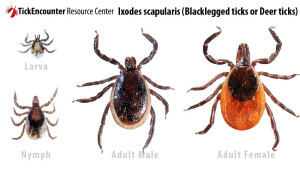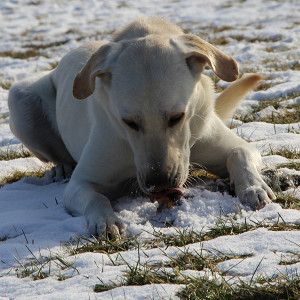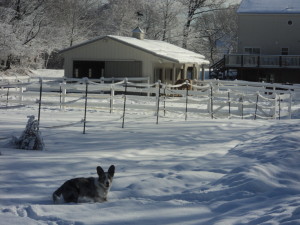Dog Walking in The Newburyport Area…
I enjoy walking my dog clients right in my own neighborhood which has a nice trail protected by the Essex County Green Belt Association. Anne happily conducts her beach walks during off season or along private beach areas year round. However, sometimes we venture off to local park areas and we would like to share a few of our favorites…
Walking your Dog at Maudslay State Park, Newburyport, MA
Maudslay is not only one of my favorite spots for walking dogs but it’s my number one favorite place to ride my horse. There is plenty of parking and bathroom facilities. There is a small fee ($2.00) for parking but well worth the convenience of facilities and a well kept trail system.
Keep your dogs on a leash and please watch out for mountain bikers and horseback riders, especially around blind corners. The park offers a easy to navigate trail systems that is relatively flat with small hills. You can usually find a supply of trail maps just inside the parking area.
Situated along the Merrimack River, this park features beautiful gardens and plantings with masses of azaleas and rhododendrons that bloom in May and June. The park is a nesting ground for the bald eagles and some trails are closed during nesting season.
My personal favorite trail, Pasture Trail and the Mile Circle, veers off to the left as you enter the park. It will take you through a rolling meadow, past a stone bridge, through the rhododendrons and past beautiful river views.
Click here to visit the Maudslay State Park Website
Walking your Dog on Old Town Hill:
Newman Rd, Newbury, MA
There is no leash law in Newbury, MA but it’s best to keep your dog on a leash. It’s a nice hike but since it borders the salt marshes you should avoid the area during “greenhead season” when pesky biting flies are out. Usually around the first 2 weeks of July.
There is limited parking. There is a small area but it fills quickly on nice days.
Owned by the Trustees of Reservations, Old Town Hill offers the nature lover a chance to walk to the top of a wooded glacial drumlin and explore the edge of a broad salt marsh. It’s a very quiet area with a good combination of coastal birds, inland birds, and wild mammals. Here’s a hike where the road leading to the reservation is worth the trip in itself. Newman Road is a New England country lane in the truest sense; farms, fields, woodlands, pastures, and giant maples line the east end of the road, making it a perfect place to go for a stroll. Farther down Newman Road to the west, you will pass through a beautiful marshy area that drains into the Parker River; it’s a good place to bring the binoculars and do some birding. Highlights: Hilltop view, salt marsh, good birding.
Click here to visit the website of the trustees of Old Town Hill
Take Your Dog for a Walk on Newburport’s Clipper City Rail Trail
The first phase of the Clipper City Rail Trail was completed in 2010, and is a 1.1 mile multi-use pathway running between the Massachusetts Bay Transportation Authority (MBTA) commuter rail station and the shoreline of the Merrimack River near downtown Newburyport. The trail corridor ranges from about 40 to 80 feet wide, and the multi-use asphalt pathway is 10 feet wide for walkers, bicyclists, and other non-motorized users. In a relatively short distance, the trail corridor cuts through hills and climbs above the harbor, passing through a variety of environments including an industrial park, a densely developed neighborhood, and the waterfront. An 8-foot-wide pile-supported boardwalk made of Forest Stewardship Council (FSC) certified tropical hardwood connects the Rail Trail to Cashman Park along the river. There are a number of stairway and spur trail connections to side streets, as well as amenities such as Haley’s Ice Cream and the Graf Ice Skating Rink, and various bakeries, coffee shops, and restaurants are located a short distance from the trail. Two public schools located nearby, the River Valley Charter School and the Molin School, regularly use the trail for students and teachers to walk to the downtown, the harbor, parks, and other destinations. The Rail Trail has a distinct and attractive character due in large part to the extensive public art the City has installed along the corridor.
Check out this video of the Clipper City Rail Trailhttp://youtu.be/Ih6ozeQKdA4
Beach Walks on Plum Island
Dogs are not allowed on Plum Island beach (on the tip of the island) from Memorial Day through Labor Day but it’s a popular spot to walk during the off season. Dogs are not allowed on the National Wildlife Refuge year round.
Below is a List of Off-Leash Dog Parks in Newburyport, MA published on cityofnewburyport.com in January, 2014
Dog Walking in Downtown Newburyport
Walking around town is a great way to see downtown Newburyport and bringing your four legged friend along makes it even better. You can park at the NRA East lot stroll the waterfront boardwalk up through the waterfront park and into town. Be sure to bring along the all important poop bags as laws are strictly enforced. Although stores do not allow pets you’ll find that many of these pet friendly establishments leave a fresh bowl of water out for visitors.
City of Newburyport Off-Leash Dog Parks
The City Health Department/Animal Control Division would like to extend a reminder of the Off-Leash Dog Park locations, hours and rules to all residents and users of the parks. Please see the list below of Off-Leash areas and their hours. The rules are the same for each area.
Cashman Park
o Hours: 7:30 AM – 9:00 AM and 4:00 PM – 7:00 PM
Moseley Woods
o Hours: Dawn – 10:30 AM and 4:00 PM – Dusk
March’s Hill
o Hours: Dawn – 10:30 AM and 4:00 PM – Dusk
Off-Leash Area Rules:
(e) The following rules apply to the use of designated off leash areas: Owners, per the below rules, define persons with direct care, custody, and control of a dog while in a designated off leash area.
(1) Dogs must be licensed and vaccinated as required by applicable law and ordinance (this is the case for both leashed and off leash dogs) and have no contagious conditions, diseases or parasites.
(2) Dogs must be leashed when entering and when exiting a designated off leash area.
(3) Dogs with a history of dangerous or aggressive behavior, e.g. history of dog fights or aggression toward people as determined by the animal control officer, are prohibited from designated off leash areas during designated off leash times.
(4) Dogs younger than four (4) months of age are not allowed off leash as all inoculations are incomplete at this age.
(5) Intact unleashed male dogs must be supervised closely and immediately removed or leashed if interfering with other dogs.
(6) Female dogs in season/heat are not allowed off leash in designated off leash areas.
(7) Owners must immediately remove from designated off leash areas dogs who are exhibiting aggressive behavior towards people, other dogs or wildlife.
(8) While in designated off leash areas, owners must remain with and monitor their dogs.
(9) Owners must carry a leash, one leash per dog is required.
(10) Owners must have in their possession an adequate number of bags, or other appropriate device, e.g. a pooper scooper, in their possession for removal of their dogs’ waste.
(11) Owners must clean up after their dogs, owners who fail to do so are subject to a fine in accordance with applicable law and ordinances. This is the case for both leashed and off leash dogs.
(12) No digging is allowed. Owners must fill in any holes dug by their dogs.
(13) No owner shall have more than two (2) unleashed dogs in a designated off leash area at any one time.
(14) Off leash dogs are not allowed in playgrounds, tennis courts, basketball courts and athletic fields.
(15) Owners in violation of above rules shall be subject to a fine of fifty dollars ($50.00).
If an emergency situation occurs, please contact the Animal Control Officer or the Police Department.
Please be cognizant of the park rules and considerate of other park users while using the off-leash areas. Be advised that these areas are monitored on a daily basis to ensure compliance of these rules. Residents with further questions regarding the Off-Leash Dog Parks can contact Mr. Robert F. Bracey, Director of Public Health or Mr. Matthew J. Lipinski, Regional Animal Control Officer at the City Health Department at (978)465-4410.




